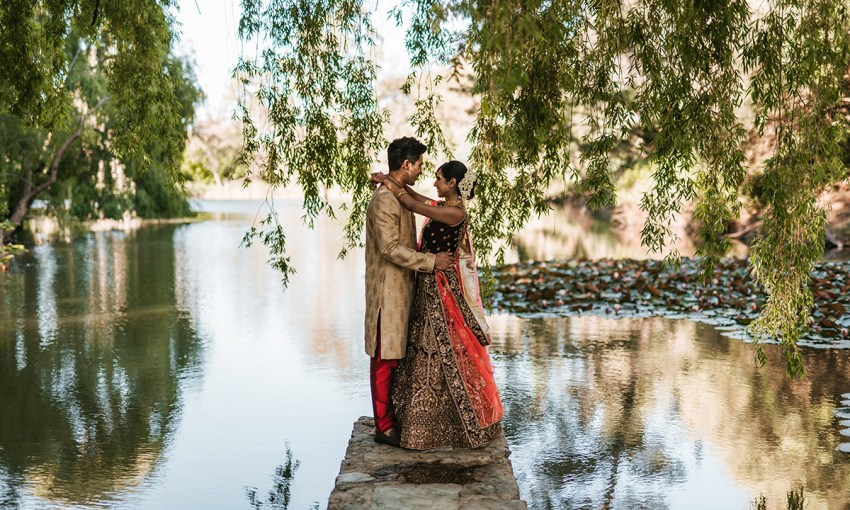Love is a universal language, and these couples embody the rich cultural diversity and heritage that make up modern South Australia.
Harmony in matrimony
A MARRIAGE OF TWO CULTURES
Doctors Gayatri Asokan and Shaveen Kanakaratne first met when they were seconded to Alice Springs Hospital as part of their surgical training. Quickly becoming friends, they started dating and eventually decided to get married.
Gayatri was born in India with a Hindu upbringing, while Shaveen was born in Sri Lanka and raised in the Seychelles. Their colourful wedding was held at Glen Ewin Estate, with a Hindu ceremony followed by traditional Sri Lankan customs.
A Hindu ceremony involves 4000-year-old religious customs and follows a series of rituals completed in Sanskrit, the language of Hindu scriptures.
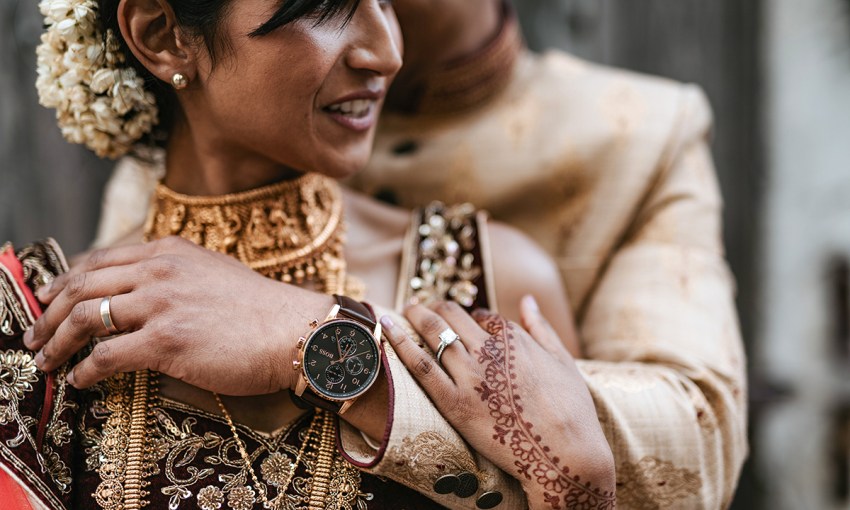
“It was important to have a traditional wedding, the rituals of which are meant to invoke blessings from our gods,” Gayatri says. “A Hindu wedding is not complete without the presence of fire, which is considered auspicious.”
At the ceremony, the couple exchanged garlands to welcome one other. Among the many other rituals, there was the lighting of a small fire in a homakund bowl, with the groom asked to make offerings to Hindu deities.
The bride’s father and the couple place their hands over one another as the bride’s mother pours a gentle stream of water over them, symbolising that the bride is now making a transition to the groom’s family.
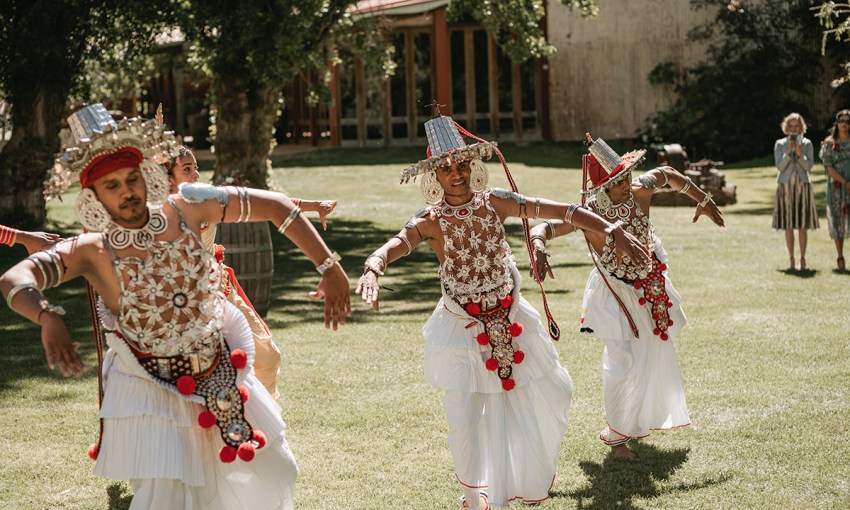
The groom places red powder on the bride’s forehead as a mark of her married status, and presents her with a wedding necklace, tying it around her neck.
The priest and the families then blessed Shaveen and Gayatri with grains of rice and rose petals, wishing them prosperity and happiness.
“It was very special to wear the traditional clothing and jewellery, both of which were designed and custom-made in India,” says Gayatri. The jasmine flowers that adorned her hair were flown in from India.
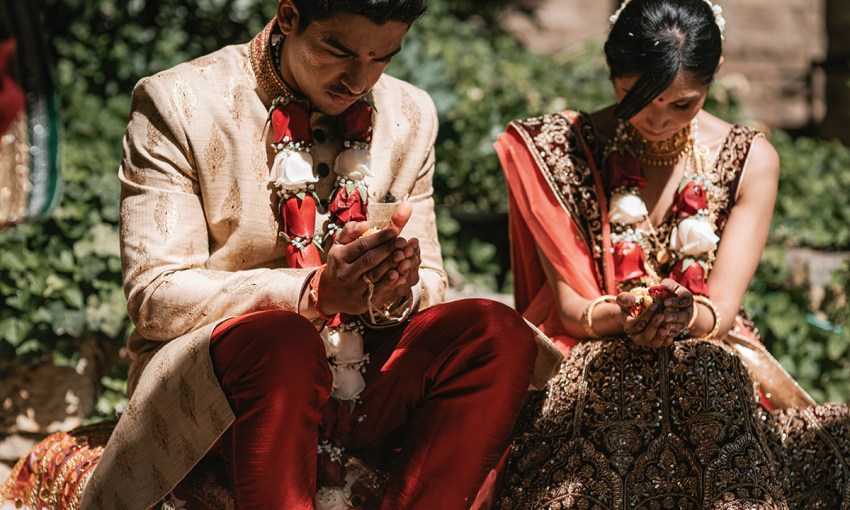
Following the Hindu ceremony, a traditional Sri Lankan song of blessings was delivered by Shaveen’s 10-year-old family friend, before a traditional dance was carried out by professional Sri Lankan dancers. The parents gave betel leaves as a blessing of prosperity.
“It was such a different wedding experience for some guests,” says Gayatri. “The meanings behind the rituals were explained on a wedding card given to each guest so they could follow along, and there was a celebrant who translated the Sanskrit words to English.”
“We embraced the positive energy the rituals created and the blessings that were bestowed upon us. The whole experience was unique and joyous.”
VIBRANT TRADITIONS
Leena Brij was born in the Fijian islands to an Indian family, who migrated to Australia in 1986. Coincidentally, that was the same year her now-husband Agufana Pepela and his family came to Australia from Kenya.
“In the 70s, Agufana’s mother Gloria, an Australian, was something of a pioneer to marry a Kenyan man at a time interracial marriage was not as widely accepted,” Leena says.
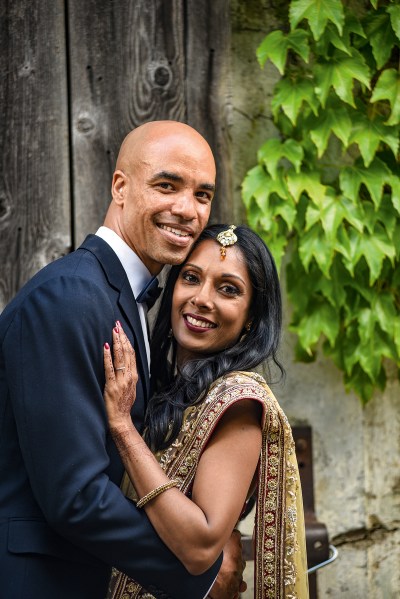
Following a family tradition of following love across culture and religion, Leena and Agufana were married in 2016 with a series of celebrations, incorporating many colourful Indian and Hindu traditions, as well as Kenyan culture.
“Even though we have spent most of our lives in this wonderful country as Australians, we wanted to celebrate our rich and unique backgrounds and value some of our cultural rituals and customs,” Leena says. “We wanted to be proud of who we are today and where we have come from.”
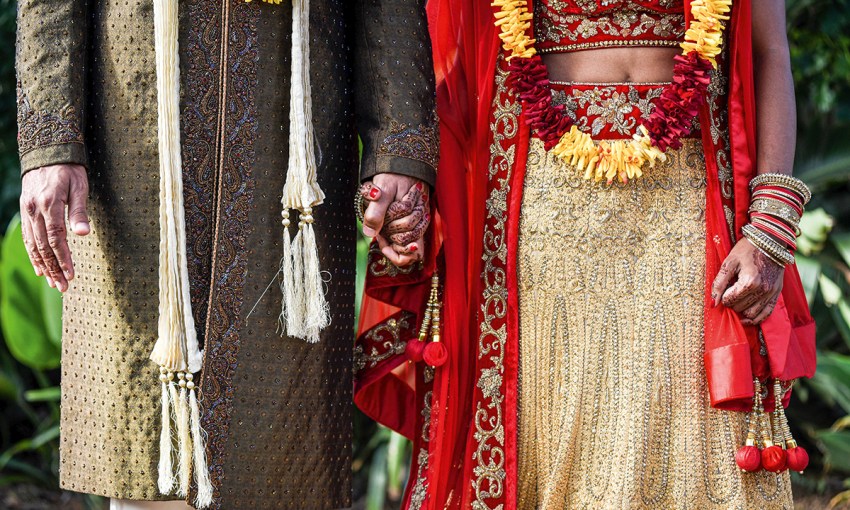
The couple hosted two separate wedding celebrations. An Indian ceremony was held at a relative’s house under a giant gum tree with a reception in their pergola and garden, adorned with colourful umbrellas. Two days later, a non-religious Western ceremony was held at Glen Ewin Estate.
But for their arrival to the Indian-themed celebration, groom Agufana and his brothers had planned a surprise. As is Kenyan tradition, the three brothers made their entrance wearing sheets to cover their bodies, with music, singing and dancing.
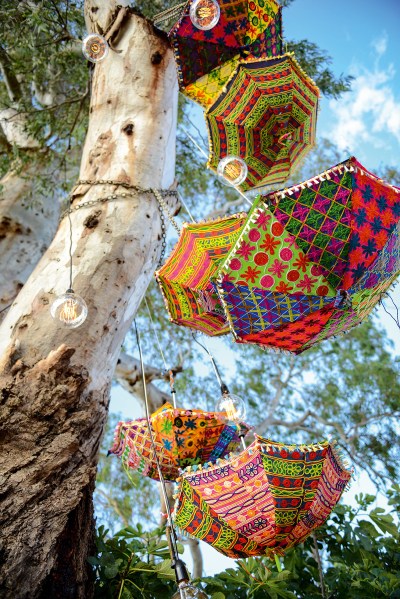
One wore a Kenyan flag, and two wore colourful fabric pieces, known as a Kanga. It was a game to see if Leena’s mother could pick out the right man to be her daughter’s husband.
“My poor mum, what a surprise,” Leena says. “After he noticed her confusion, Agufana cheated and let her know which one he was. There was much laughter and it was lots of fun.”

The ceremony was performed by a Hindu priest and observed a number of cultural traditions. “As we put rings on each other’s fingers the clouds separated, and a beam of sunshine fell on us. It got a reaction from our guests so it must have looked quite special.”
Prior to the wedding, one day was dedicated to a Mehndi and Henna ceremony with family and friends, as beautiful designs were painted onto the hands and feet of the bride and the groom. There was plenty of food, drink and laughter.
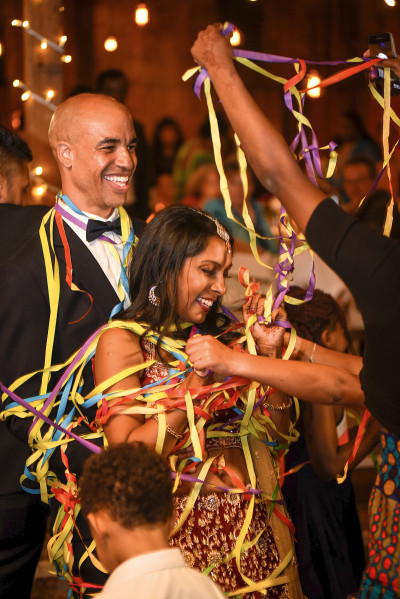
The following day, a turmeric ceremony was held. This involves applying a turmeric paste to the bride and groom’s face, arms and legs.
There was quite a bit of stress involved with so many events, but they provided many special moments for family members. “The ceremonies, rituals and customs that we were lucky enough to enjoy were truly wonderful and will always be held in a special place in our hearts.”
TEAMWORK
Adelaide-born Alison Gogler met German expat Dennis Zuege in 2014, while both were working at a resort on Hamilton Island. The couple have been inseparable ever since, together living and working around the world, from Kangaroo Island to Scotland, and two years in Germany.
When they were married at Kuitpo in December last year, it was important for the couple to incorporate German culture into their day, especially as Dennis’ family were travelling across the world for the occasion.

“Our biggest German tradition on the day was the wood cutting ceremony,” Alison says. “The wedding couple must cut a log of wood with a two-person saw. It doesn’t work unless the couple act as a team to pull and push.
“It was only afterwards that we found out normally the log is pre-cut and the wedding couple simply finish cutting the log. Dennis and I cut the whole thing ourselves — so we make a very good team!”
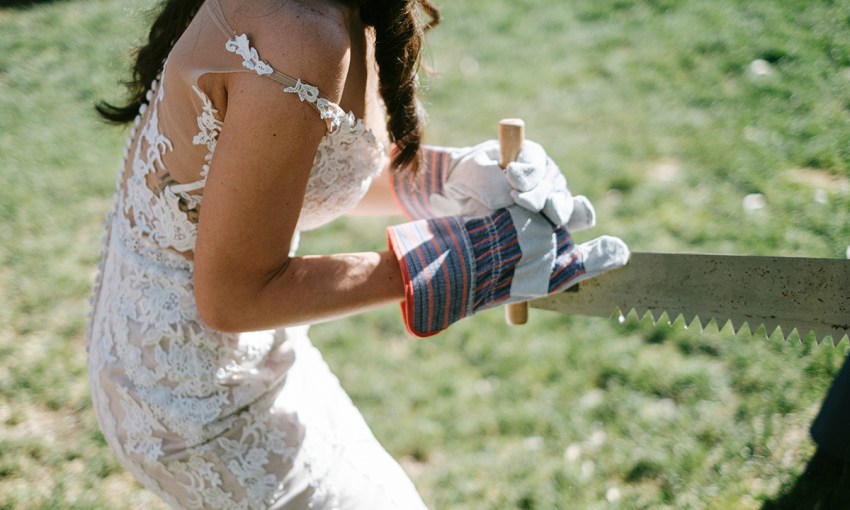
Guests cheered and clapped, spurring the couple on to saw through the log, their first act together as a married couple. They brought them drinks afterwards. “It was hard work,” Alison says.
In planning the wedding, the couple had to come up with ways to overcome the language barriers between guests, as Dennis’ family members do not speak English.
So, the ceremony was carried out in both English and German. The setting among the giant pine trees of Burbrook Forest made the occasion particularly memorable.
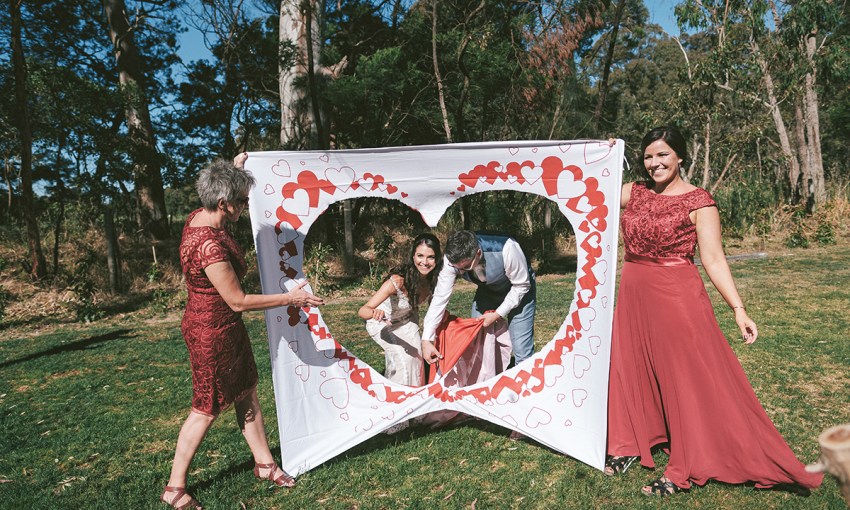
The couple also came up with an elegant way to overcome the language barrier during reception formalities at Kuitpo Hall. “We translated the speeches and had them sitting ready at the table settings so each person had the right language in front of them. That way everyone felt part of the celebrations,” Alison says.
Although it’s not a wedding tradition, the couple had a pretzel tree with plenty of German mustard, German beer and partied into the night with German music.
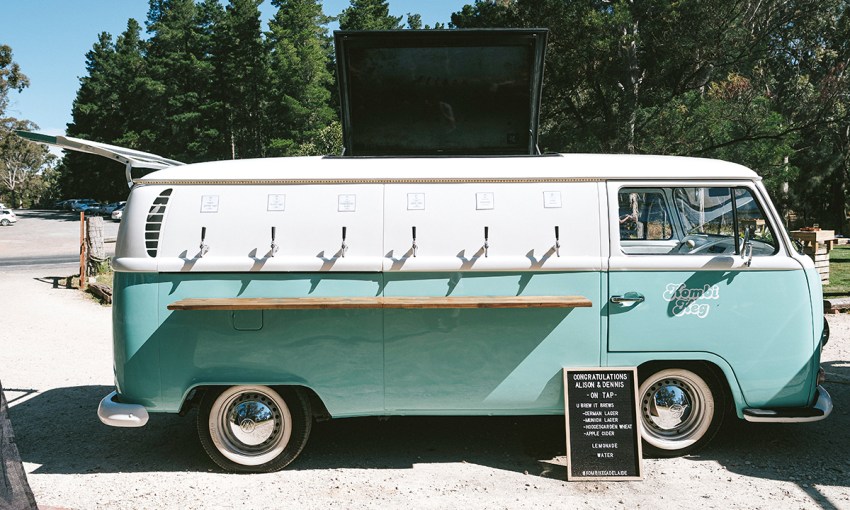
“Another tradition we had on the day, which was a surprise from Dennis’s family, was the bed sheet cutting,” Alison says. Using tiny scissors, the couple had to cut out a heart which was painted onto a bed sheet. Once they meet in the middle, the groom then carried his bride through the heart.
“The greatest gift and emotion from this day was that all our beautiful friends and family from around the world were all in one place with us at one time.”
A MOMENT IN TIME
Although born in opposite hemispheres and raised in different cultures, Luise and Seamus McHugh are a perfect match, and this was reflected in their thoughtfully-planned wedding at Seppeltsfield Barossa.
With Luise born in Fiji and Seamus born in Ireland, the couple believed it was important to highlight their heritage in the celebrations. It also meant that guests were in for a real treat.

“Although the Irish and Fijian people speak different native languages, look different and celebrate in different ways, we knew the shared foundational traditions involved singing, dancing, and family,” Luise says. “Sharing those traditions with our friends was important to us, as a sign of respect to our parents and ancestors.”
One of Luise’s favourite moments was a performance by Fijian dancers during the reception. This traditional style of dance is performed by both men and women.
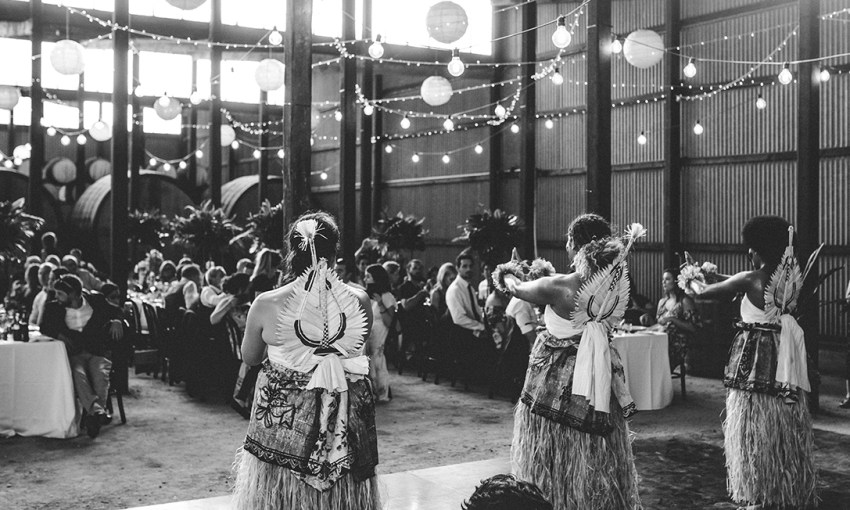
For some guests, the traditions were a completely new experience.
“I remember looking across the reception to take it all in. It was an overwhelming but heart-warming moment to hear the different accents, and see the people from all walks of both of our lives in one single room,” Luise says.
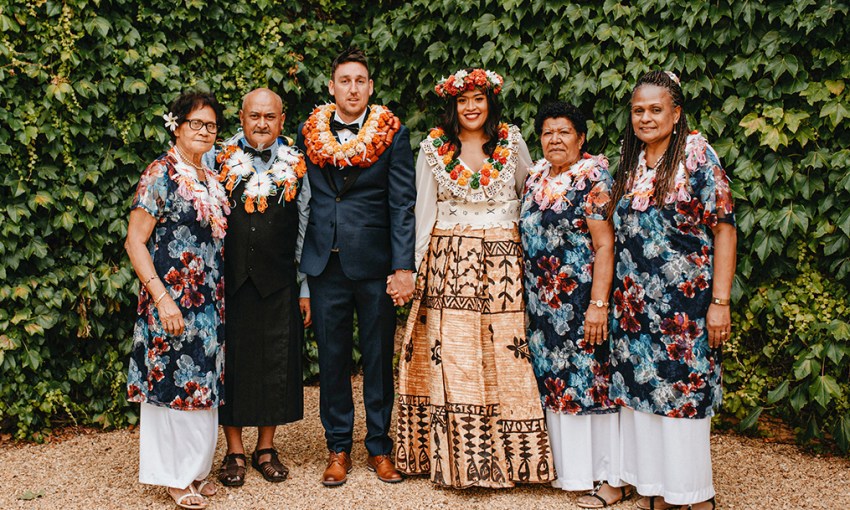
“The week of the wedding was the first time our families had met, so it was also important to show his family where I’m from, and the values that I grew up with.”
Luise made her entrance to the reception wearing a Fijian Masi cloth over her wedding dress. The cloth is made from the bark of a mulberry tree, which is native to Fiji. Handmade by Luise’s maternal grandmother (Bui) for special occasions, the cloth is adorned with traditional hand-drawn designs, representing her tribe, village and island.
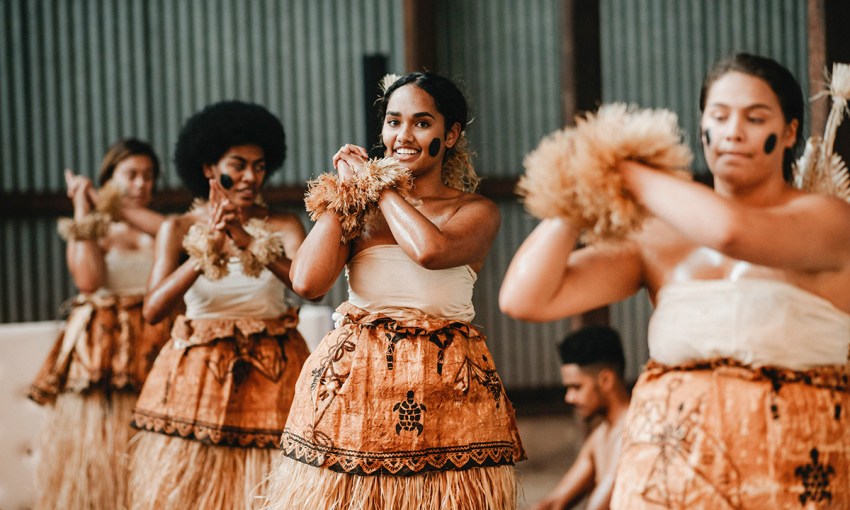
“Bui passed away when I was 16, so it was special to wear something that she made, and have her with me on my wedding day,” Luise says.
Another colourful tradition saw garlands of flowers and plants (Fijian salusalu) worn by the bride and groom. Meanwhile, garlands of flowers traditional to the island of Rotuma, where Luise’s father Henry is from, were presented to Seamus’ parents Jim and Breige McHugh.
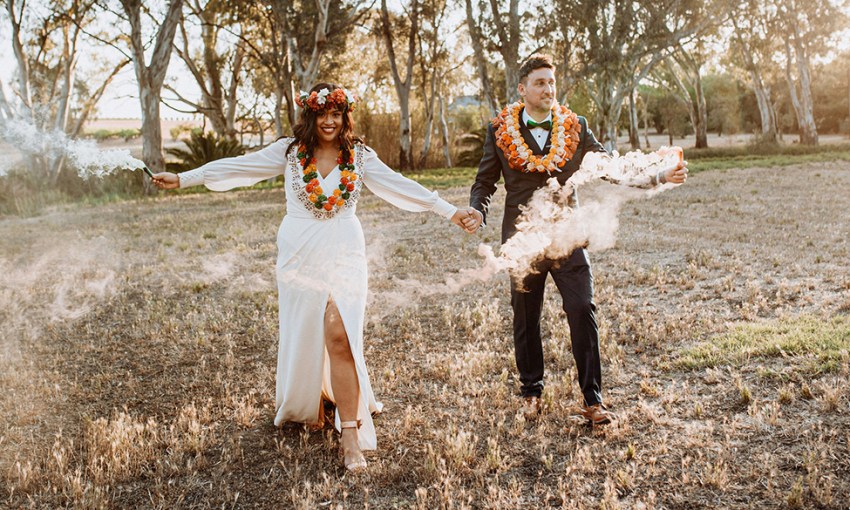
“The overall meaning of giving the salusalu and tefui represents my family showing respect, love and appreciation for special visitors, as well as celebrating our wedding,” Luise says. “It was a unique moment in time.”
The couple also held a second celebration in Ireland, which incorporated, of course, Irish traditions including dancing.
A GOLDEN MOMENT
For Leah Metaxas and Oliver Harms, the sacred crowning ritual was the highlight of their Greek Orthodox wedding ceremony, held last year in the beautiful Nativity of Christ Greek Orthodox Church at Port Adelaide.
Both Leah and Oliver have grandparents who migrated to Australia from the Mediterranean. They celebrated their heritage with a Greek Orthodox ceremony and, as Oliver is Catholic, the wedding was also recognised by his church.
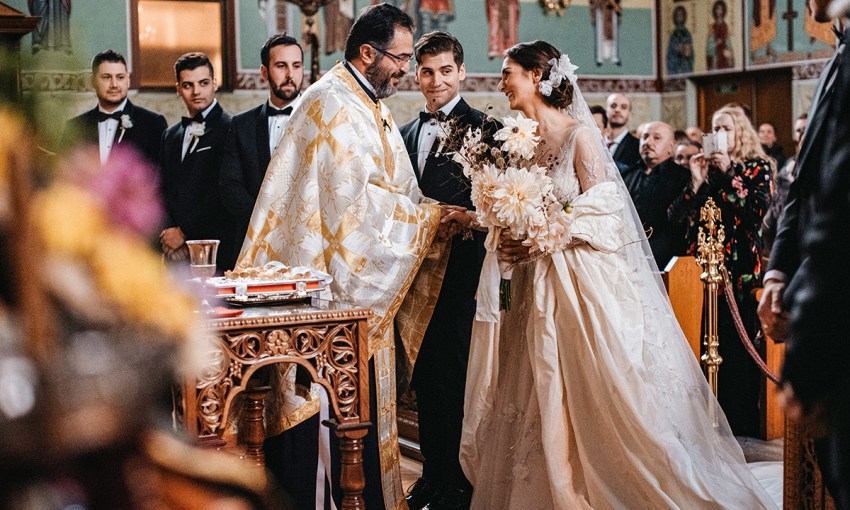
Among the many ancient rites and rituals in the ceremony, the crowning of the bride and groom was a focal point for the couple.
Leah commissioned artist and jewellery designer Yohannah Westbrook to create their beautiful stefana crowns, made of pure silver and dusted with 24-carat gold leaf.
Joined by a white ribbon and blessed by father Ioannis Choraitis, the stefana crowns symbolise Christ establishing the couple as the king and queen of their home, ruling with wisdom, justice, and integrity.
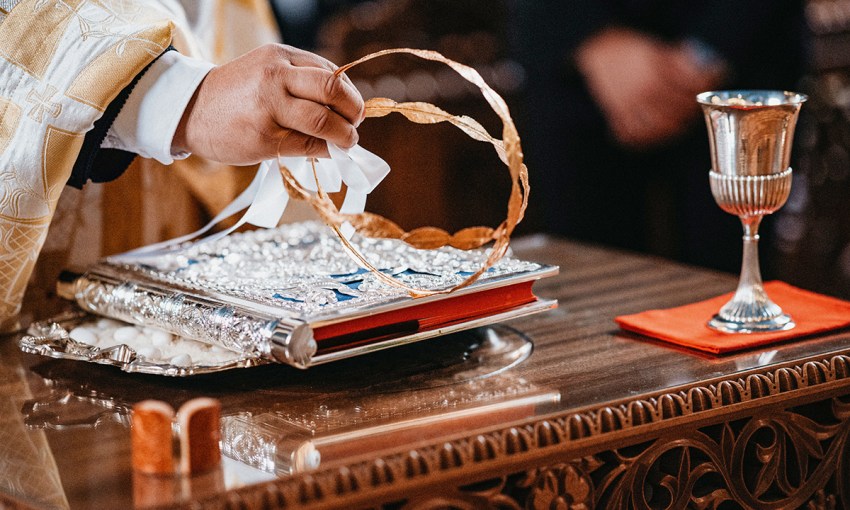
“I got quite emotional through the stefana ritual, it was the highlight of our wedding,” Leah says. “The hymns were so beautiful … it was very special.”
This ritual also involves the Koumbaro — a member of the wedding party, similar to a best man, but who must be a member of the Orthodox Church. Friend Paul Vasileff carried out this role, placing the wedding rings onto the bride and groom’s hands before then placing the stefana crowns.
“Oliver and I come from similar backgrounds; we both are second-generation Australian but have a deep love and respect for our Mediterranean heritage,” Leah says.
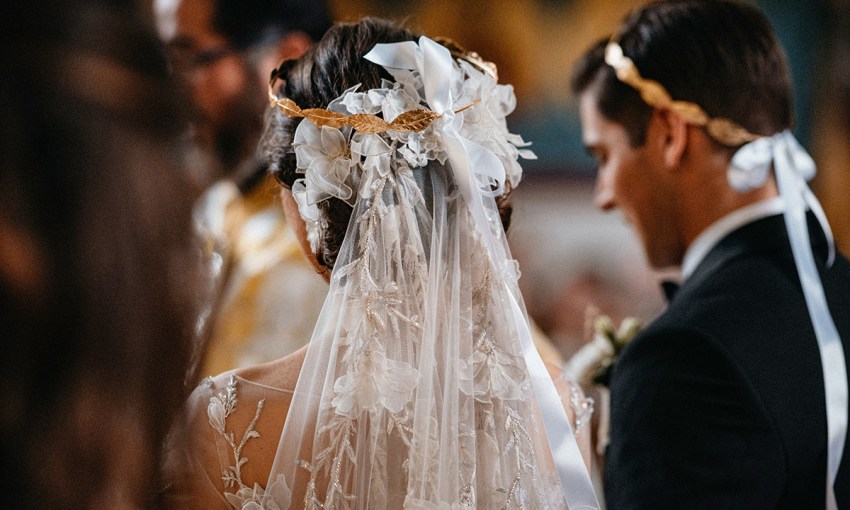
“Our grandparents are central to our personal stories. Oliver is a history, English and religion teacher and he believes that ancestry is fundamental in keeping the memory of family and generations alive,” she says.
In the Greek Orthodox church, the wedding ceremony is an ancient rite full of profound symbolism and meaning. Rituals include the betrothal, candles, the joining of hands, the crowning, the common cup, the ceremonial walk and the removal of the crowns.
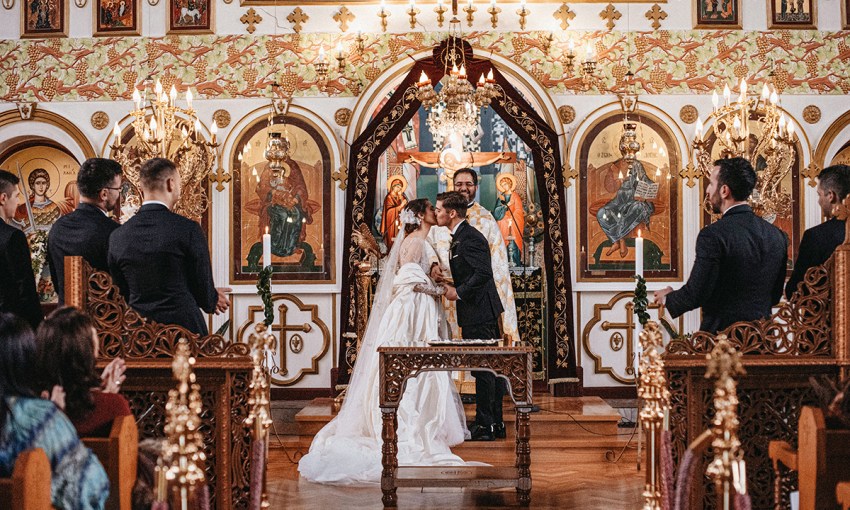
Since their wedding, a fire tore through the church, destroying the beautiful paintings and interior of the building.
“That church has been part of my family’s history since they migrated to Australia in 1960, so now as they rebuild it is another chapter in our story. There is an element of sadness, but it means the photographs of our ceremony are even more special.”
This article first appeared in the March 2020 issue of SALIFE magazine.



